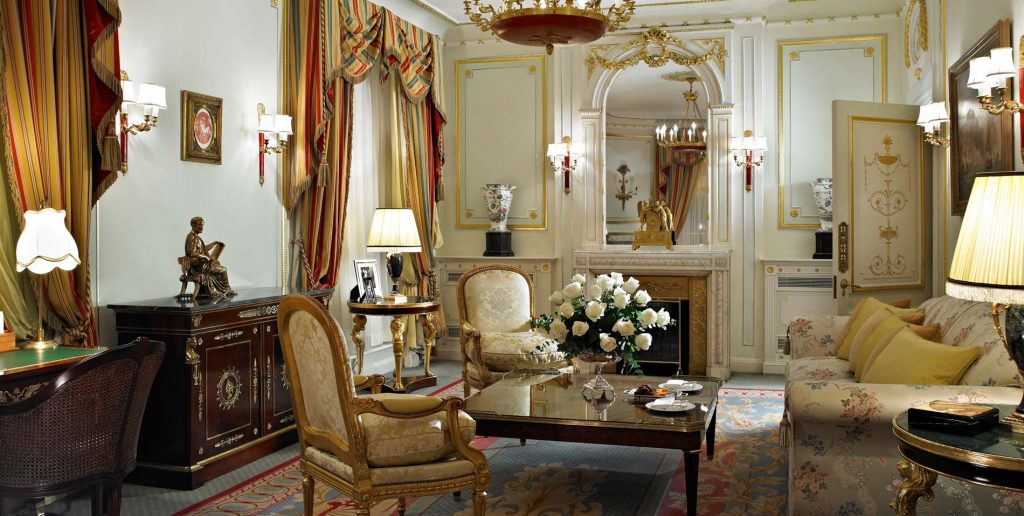
The Ritz Hotel in London, opened in 1906 by the renowned Swiss hotelier César Ritz, stands as an epitome of luxury and high society. This iconic 5-star hotel, located at 150 Piccadilly, is a landmark of elegance and style, profoundly influencing the English language with the term « ritzy, » signifying opulence and fashion.
Historical Significance and Ownership
The Ritz has seen various ownerships, from the Bracewell Smith family to the Barclay brothers, and most recently, a Qatari investor in 2020. It played a critical role during World War I, hosting politicians and socialites, and in World War II, it became a central hub for elites and political discussions.
Architectural Marvel
Designed by Charles Mewès and Arthur Davis, The Ritz’s exterior is a remarkable Franco-American style with minimal English architectural influence. It proudly displays large green copper lions, the hotel’s emblem. The interior, primarily in the Louis XVI style, is noted for its grandeur and opulent design, compared to a royal palace.
The Palm Court and Dining Excellence
The Palm Court, famous for « Tea at the Ritz, » showcases a Louis XVI setting with mirrored panels and gilded decorations. The hotel houses six private dining rooms, including the Marie Antoinette Suite, and an Art Deco style Rivoli Bar. Its cuisine, led by world-class chefs, has earned a Royal warrant from the Prince of Wales.
Cultural Impact and Popularity
Throughout its history, The Ritz has been a favorite among celebrities, politicians, and the social elite. It’s featured in literature, songs, and films, reflecting its status as a cultural icon.
Modern Day and Challenges
Despite its prestigious history, The Ritz has faced challenges, including ownership changes, tax controversies, and the impact of the General Strike of 1926 and the Great Depression. However, it continues to uphold its legacy of luxury and service.
Conclusion
The Ritz Hotel in London is not just an accommodation; it’s a symbol of timeless elegance and a witness to history. Its architectural beauty, historical significance, and cultural impact make it more than just a hotel – it’s an institution in the heart of London.